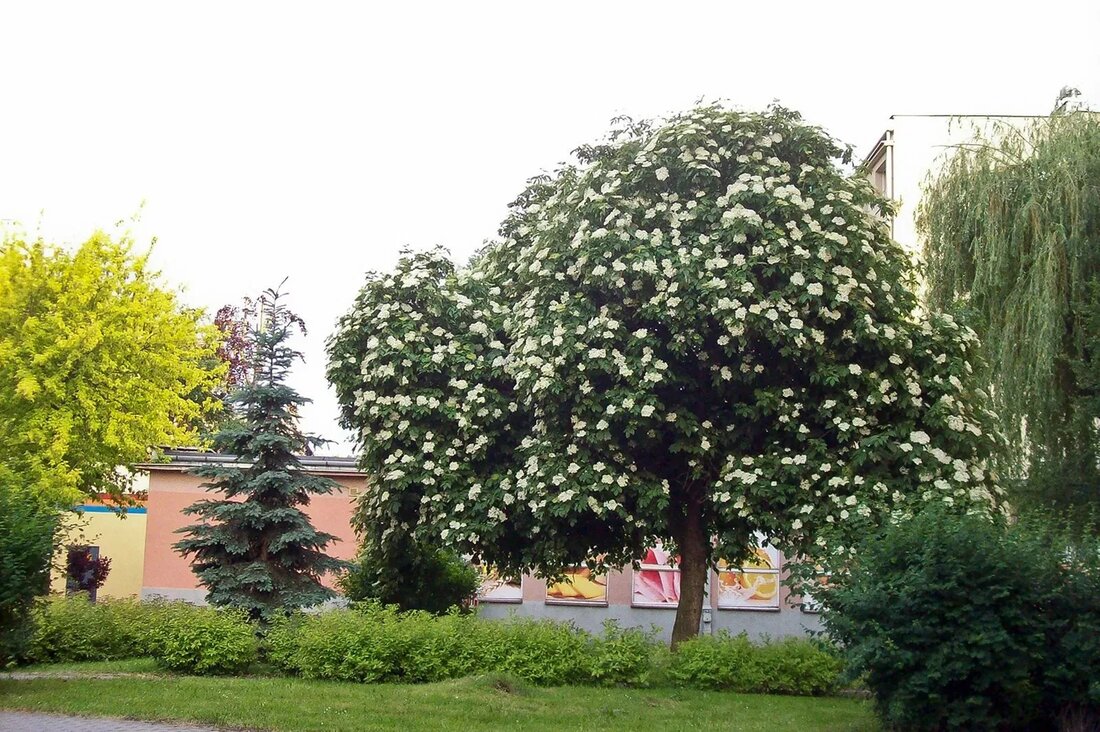Elderberry - Healing Powers & Benefits. A tried and tested remedy for infections and wound healing
Elderberry (Sambucus nigra) comes from the elder tree, which is native to Europe and parts of Asia and Africa. A related species called American elderberry (Sambucus canadensis) grows in the United States and Canada. Many cultures have valued both elder trees and relied on them for everything from musical instruments to food and medicine. In medieval Europe, elderberry was revered as sacred and was said to have health-protecting and restorative properties. For centuries, herbal remedies in the form of teas, poultices, creams and ointments have been made from elderberry to promote health, relieve shortness of breath and soothe irritated skin. ((Link removed)) Sometimes called the “Tree of Music,” this is...

Elderberry - Healing Powers & Benefits. A tried and tested remedy for infections and wound healing
elderberry (Sambucus nigra) comes from the elder tree, which is native to Europe and parts of Asia and Africa. A related species called American elderberry (Sambucus canadensis) grows in the USA and Canada. Many cultures have valued both elder trees and relied on them for everything from musical instruments to food and medicine.
In medieval Europe, elderberry was revered as sacred and was said to have health-protecting and restorative properties. For centuries, herbal remedies in the form of teas, poultices, creams and ointments have been made from elderberry to promote health, relieve shortness of breath and soothe irritated skin. ((link removed))
Sometimes called the “tree of music,” the wood of the elder tree is hard and well suited for making instruments. The genus name Sambucus actually comes from the flutes that the ancient Greeks carved from hollowed-out elder tree trunks. The sambuca, a large triangular harp from Europe, was also named after the tree from which it comes. Woven baskets are another common use for elderberry wood. Branches are soaked in the dark purple elderberry dye, dried and then woven into patterns with other branches of contrasting colors. Other uses for elderwood include combs, pins, arrow shafts, and spindles for spinning yarn. ((link removed), source 2)
Elderberry in traditional remedies
Elderberry is a tried and tested remedy in natural medicine. The elder tree and its products have been said to have been used in traditional medicine for centuries, from arthritis to animal diseases. Elderberries and elderflowers have traditionally been consumed or applied topically to relieve pain, swelling, infections, respiratory illnesses, and skin conditions. ((Link removed), Source 2, (Link removed))
From Europe to the United States, poultices and preparations were used to speed wound healing and prevent infections. Traditional thinking has believed that elderberry helps ward off a cold or flu, and elderflower tea can break a fever. ((link removed), source 2)
Health Benefits of Elderberry
Although scientific interest in traditional medicine has increased significantly in recent years, traditional European medicine remains largely unexplored compared to traditional Chinese medicine. Fortunately, Eastern European herbal remedies (including elderberry) were preserved and passed down. Ongoing studies are evaluating and improving the benefits of elderberry. Below are three of the most well-known benefits of elderberry. ((Link removed), (Link removed))
1. Promotes overall health and well-being
One of the greatest strengths of the elderberry plant is the excellent nutritional profile of elderberries. The berries contain flavonoids, which are rich in antioxidants. Antioxidants protect cells from damage caused by free radicals. A diet high in flavonoids may help reduce the risk of chronic diseases. Elderberries rank higher than blueberries, blackberries, and even goji berries in both flavonoids and vitamin C content. (Source 1, (link removed), (link removed))
Like the berries, elderflowers are a good source of vitamin C, but also contain other immune-boosting compounds. Elderflower tea can be used against indigestion, edema or headaches. The leaves can relieve the discomfort associated with constipation as they have a mild laxative effect. ((link removed), source 2)
2. May relieve some flu and cold symptoms
Preliminary research suggests that elderberry may have a positive impact on some cold or flu-related symptoms. Scientists have found a decrease in congestion and symptom duration when elderberry is added to conventional therapies. The compounds in elderberries and elderflowers can reduce mucous membrane swelling and relieve constipation. (Source)
In one study, subjects with influenza-like symptoms were given elderberry syrup. Those who consumed the elderberry noticed significant symptom relief about 4 days earlier than the subjects who were given a placebo. Similarly, people given elderberry extract improved within 48 hours. More than a quarter of all were completely symptom-free and more than half showed significant improvement. In contrast, only 16 percent of the placebo group reported improvements and none experienced full recovery. ((Link removed), (Link removed))
3. Supports healthy looking skin
Elderberry, elderflower and elder leaf preparations have long been used to treat skin diseases. As a bath or wash, the flowers and leaves promote cleanliness on a microscopic level and soothe sores, sprains, wounds and bruises. The flowers can also improve complexion by toning and softening the skin. Short-term exposure to the anthocyanins in elderberry is believed to improve skin appearance. ((Link removed), (Link removed), Source 3)
Elderberry foods
Around the world, elderflowers and elderberries have been incorporated into many types of cuisine. Flowers and berries are made into aromatic syrups or baked into pancakes and muffins. They can even be dipped in batter and fried. The berries make distinctive cakes, jams, jellies, candies and sauces. (Source 1, (link removed))
Elderberry is also used to brew drinks. Medicinal teas and elderberry wine are made from either flowers or berries. Sambuca, an Italian liqueur, is made from aniseed and elderberry. Socata, a traditional Romanian carbonated drink, is made by boiling elderflowers with lemon and sugar and fermenting the mixture for 3 to 6 days. ((link removed))
Raw berries are not often eaten intentionally because they contain a cyanoglycoside that can cause illness. Elderberries aren't the only foods that contain cyanoglycosides. Yucca (tapioca), lima beans, almonds, sorghum, apple seeds, cherry juice and bamboo shoots also contain cyanoglycosides. Like elderberries, these foods are fairly safe to eat when prepared correctly. ((Link removed), (Link removed))
How to find elderberry
One of the most important benefits of elderberry is its activity against some types of harmful organisms. In fact, this is one of the most attractive features for those who participate in natural health. ((link removed))
Elderberry herbal extracts, syrups, tinctures, lotions, capsules, and teas are available at many retailers. You can also find elderberry in immune system supplements that combine the best immune-boosting ingredients.

 Suche
Suche
 Mein Konto
Mein Konto
